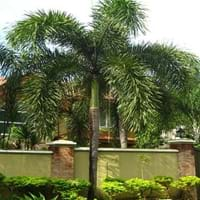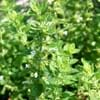Life Span
Perennial
Annual
Origin
Southern Europe
Australia
Types
Not available
Not Available
Habitat
Dappled Shade, Mediterranean region, Shady Edge, Woodland Garden
Forest edges
USDA Hardiness Zone
4-9
10-15
Sunset Zone
1a, 1b, 2a, 2b, 3a, 3b, 4, 5, 6, 7, 8, 9, 10, 11, 12, 13, 14, 15, 16, 17, 18, 19, 20, 21, 22, 23, 24
H1, H2, 24
Habit
Clump-Forming
Arching/Fountain-shaped
Flower Color
White, Light Pink
White
Flower Color Modifier
Bicolor
Bicolor
Fruit Color
Brown
Orange Red
Leaf Color in Spring
Green, Light Green
Green
Leaf Color in Summer
Green, Light Green
Dark Green
Leaf Color in Fall
Green, Light Green
Dark Green
Leaf Color in Winter
Light Green
Green
Plant Season
Spring, Summer, Fall
Spring, Summer, Fall, Winter
Sunlight
Full Sun, Partial Sun
Full Sun, Partial Sun
Type of Soil
Loam, Sand
Loam, Sand
The pH of Soil
Neutral
Acidic, Neutral
Soil Drainage
Well drained
Well drained
Bloom Time
Late Spring, Early Summer, Summer
Early Summer, Summer
Tolerances
Deer resistant, Drought
Wet Site, Drought, Salt
Where to Plant?
Ground, Pot
Ground
How to Plant?
Cuttings, Seedlings
Seedlings, Transplanting
Plant Maintenance
Low
Medium
Watering Requirements
Medium
Does not require lot of watering, Use and maintain water-efficient soaker hoses, Use Mulches to help prevent water loss during hot and windy weather, Water in morning to avoid prompting diseases, Water twice a day in the initial period
In Summer
Lots of watering
Lots of watering
In Spring
Moderate
Moderate
In Winter
Average Water
Average Water
Soil pH
Neutral
Acidic, Neutral
Soil Type
Loam, Sand
Loam, Sand
Soil Drainage Capacity
Well drained
Well drained
Sun Exposure
Full Sun, Partial Sun
Full Sun, Partial Sun
Pruning
Remove damaged leaves, Remove dead branches, Remove dead flowers, Remove dead leaves
Remove damaged leaves, Remove dead branches, Remove dead leaves, Requires little pruning
Fertilizers
Nitrogen, Potassium
All-Purpose Liquid Fertilizer
Pests and Diseases
Gray leaf blight, Gray mold, Leaf spot, Powdery mildew
Pests and diseases free
Plant Tolerance
Deer resistant, Drought
Drought
Flowers
Insignificant
Showy
Flower Petal Number
Single
Single
Fragrant Bark/Stem
Yes
No
Foliage Texture
Medium
Fine
Foliage Sheen
Matte
Matte
Attracts
Bees
Not Available
Allergy
Avoid during Pregnancy, Skin irritation
no allergic reactions
Aesthetic Uses
Beautification, Cottage Garden
Showy Purposes
Beauty Benefits
Good for skin, Skin Problems
Not Available
Edible Uses
Insignificant
Yes
Environmental Uses
Deer resistant, Insect Repellent
Air purification
Medicinal Uses
Antiemetic, Anxiety, Appetite enhancer, Digestion problems, Insomnia, Sedative
No Medicinal Use
Part of Plant Used
Flowers, Leaves
Leaves
Other Uses
Can be made into a herbal tea, Medicinal oil, Used as insect repellent, Used for its medicinal properties, Used in herbal medicines
Not Available
Used As Indoor Plant
Yes
No
Used As Outdoor Plant
Yes
Yes
Garden Design
Container, Edible, Herb / Vegetable
Feature Plant, Foundation, Street Trees, Tropical
Botanical Name
MELISSA officinalis
WODYETIA bifurcata
Common Name
Lemonbalm, balm, common balm, balm mint
Foxtail Palm
In Hindi
नींबू बाम
Foxtail palm
In German
Lemonbalm
Fuchsschwanz -palme
In French
mélisse
sétaire palme
In Spanish
Lemonbalm
la cola de zorra de palma
In Greek
Lemonbalm
αλωπέκουρου παλάμη
In Portuguese
Lemonbalm
foxtail palma
In Polish
Lemonbalm
włośnica palmowy
In Latin
CITRAGO
foxtail palmarum
Phylum
Magnoliophyta
Tracheophyta
Class
Magnoliopsida
Liliopsida
Family
Lamiaceae
Arecaceae
Clade
Angiosperms, Asterids, Eudicots
Angiosperms, Commelinids, Monocots
Tribe
Not Available
Not Available
Subfamily
Nepetoideae
Arecoideae
Number of Species
Not Available
Season and Care of Lemonbalm and Foxtail Palm
Season and care of Lemonbalm and Foxtail Palm is important to know. While considering everything about Lemonbalm and Foxtail Palm Care, growing season is an essential factor. Lemonbalm season is Spring, Summer and Fall and Foxtail Palm season is Spring, Summer and Fall. The type of soil for Lemonbalm is Loam, Sand and for Foxtail Palm is Loam, Sand while the PH of soil for Lemonbalm is Neutral and for Foxtail Palm is Acidic, Neutral.
Lemonbalm and Foxtail Palm Physical Information
Lemonbalm and Foxtail Palm physical information is very important for comparison. Lemonbalm height is 30.50 cm and width 45.70 cm whereas Foxtail Palm height is 760.00 cm and width 460.00 cm. The color specification of Lemonbalm and Foxtail Palm are as follows:
Lemonbalm flower color: White and Light Pink
Lemonbalm leaf color: Green and Light Green
Foxtail Palm flower color: White
- Foxtail Palm leaf color: Green
Care of Lemonbalm and Foxtail Palm
Care of Lemonbalm and Foxtail Palm include pruning, fertilizers, watering etc. Lemonbalm pruning is done Remove damaged leaves, Remove dead branches, Remove dead flowers and Remove dead leaves and Foxtail Palm pruning is done Remove damaged leaves, Remove dead branches, Remove dead leaves and Requires little pruning. In summer Lemonbalm needs Lots of watering and in winter, it needs Average Water. Whereas, in summer Foxtail Palm needs Lots of watering and in winter, it needs Average Water.





